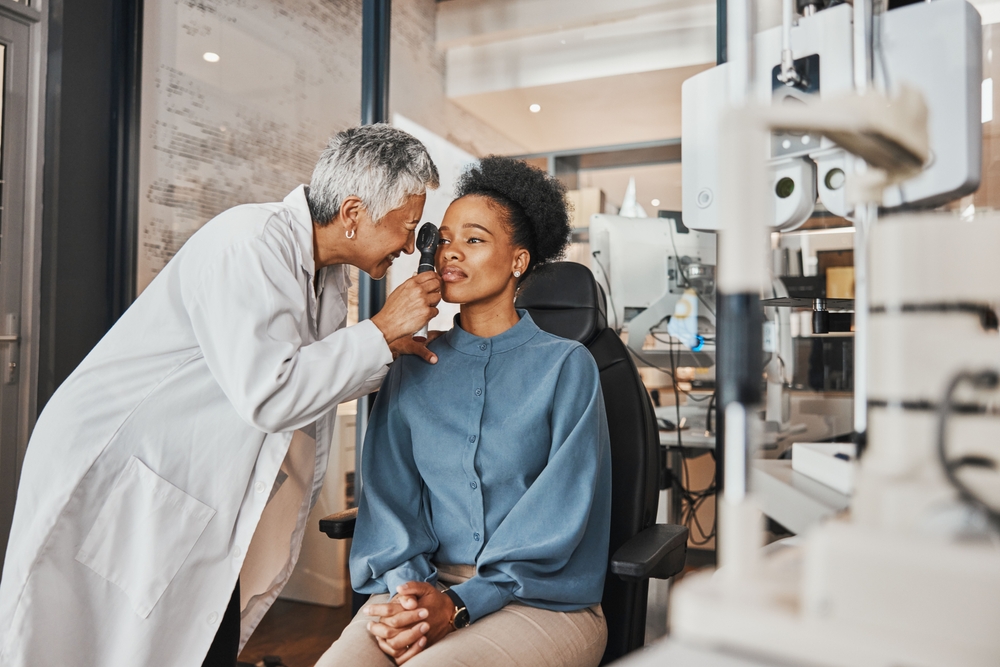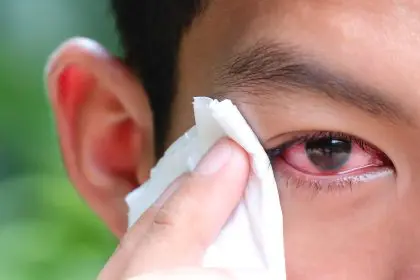Eye health is often overlooked until noticeable symptoms arise. One such symptom is frequent crust on your eyes. This seemingly minor issue can be an indicator of underlying conditions that require professional attention. Understanding why frequent crust on your eyes is a signal for an eye examination can help you maintain optimal eye health and prevent more serious complications.
Understanding eye crust: Causes and symptoms
Frequent crust on your eyes — commonly known as eye discharge — can vary in color and consistency. It may be clear and watery or thick and sticky, often forming a crusty layer along the lash line. The causes of eye crust can range from benign to serious conditions, making it essential to recognize the signs that necessitate an eye examination.
Common causes of eye crust
- Blepharitis: Inflammation of the eyelids, often due to bacterial infections or skin conditions like dandruff.
- Conjunctivitis: Commonly known as pink eye, this infection can be viral, bacterial or allergic.
- Dry eye syndrome: Insufficient tear production leads to dryness and crust formation.
- Blocked tear ducts: Tear ducts can become clogged, leading to watery eyes and crust.
- Eye allergies: allergens can cause excessive tearing and subsequent crusting.
Symptoms to watch for
Frequent eye crust is often accompanied by other symptoms that can help pinpoint the underlying cause. These symptoms include:
- Redness and swelling of the eyelids
- Itching or burning sensation in the eyes
- Watery or sticky discharge
- Sensitivity to light
- Blurred vision
The importance of an eye examination
Frequent crust on your eyes is not just a cosmetic issue; it can signal underlying conditions that may worsen without proper treatment. Here’s why an eye examination is crucial:
Early detection of infections
Infections like conjunctivitis and blepharitis can escalate quickly if not treated. An eye examination can identify the type of infection and guide appropriate treatment, such as antibiotics or antiviral medications.
Preventing chronic conditions
Conditions like dry eye syndrome and blepharitis can become chronic if left untreated. Early diagnosis through an eye examination can help manage these conditions effectively, preventing long-term discomfort and potential damage to your eyes.
Identifying allergies
Eye allergies can be triggered by various environmental factors. An eye examination can help identify specific allergens and recommend treatments to alleviate symptoms, such as antihistamine eye drops or lifestyle changes to avoid allergens.
Ensuring overall eye health
Frequent crust on your eyes may be a symptom of other underlying issues, such as blocked tear ducts or systemic conditions like autoimmune diseases. An eye examination provides a comprehensive assessment of your eye health, ensuring that any potential problems are addressed promptly.
What to expect during an eye examination
If you experience frequent crust on your eyes, scheduling an eye examination with an ophthalmologist or optometrist is the first step. Here’s what you can expect during the examination:
Comprehensive eye history
Your eye doctor will take a detailed history of your symptoms, including the frequency and duration of the crust, any accompanying symptoms and any relevant medical history.
Visual acuity test
A visual acuity test will assess how well you can see at various distances. This test helps determine if vision problems are contributing to your symptoms.
Slit-lamp examination
A slit-lamp examination allows the eye doctor to examine the structures of your eyes in detail, including the eyelids, cornea and tear film. This examination can identify signs of infection, inflammation or other abnormalities.
Tear production test
If dry eye syndrome is suspected, a tear production test may be performed to measure the amount and quality of your tears.
Allergy testing
If allergies are a suspected cause of your symptoms, allergy testing may be recommended to identify specific allergens.
Treatment options for eye crust
Once the underlying cause of frequent crust on your eyes is identified, your eye doctor will recommend appropriate treatments. These may include:
Medications
Depending on the diagnosis, medications such as antibiotics, antiviral drugs or anti-inflammatory eye drops may be prescribed.
Lifestyle changes
For conditions like dry eye syndrome, lifestyle changes such as increasing humidity in your home, taking breaks from screen time and using artificial tears can help alleviate symptoms.
Allergy management
If allergies are causing your symptoms, avoiding known allergens, using antihistamine eye drops and making changes to your environment can significantly reduce eye crust.
Surgical interventions
In some cases, surgical interventions may be necessary to address underlying issues like blocked tear ducts or severe blepharitis.
Preventive measures for eye health
Maintaining good eye health can prevent frequent crust and other eye issues. Here are some preventive measures to consider:
Practice good hygiene
Regularly washing your hands and avoiding touching your eyes can prevent infections. Clean your eyelids and lashes gently with a mild cleanser to remove debris.
Use proper eye protection
Wearing sunglasses and protective eyewear can shield your eyes from harmful UV rays and environmental irritants.
Stay hydrated
Drinking plenty of water and maintaining a balanced diet rich in omega-3 fatty acids can support tear production and overall eye health.
Schedule regular eye examinations
Regular eye examinations are crucial for early detection of potential issues. Even if you do not experience
Take action for your eye health
Frequent crust on your eyes is more than just an annoyance; it can be a signal that something is wrong with your eye health. By understanding the causes and symptoms of eye crust and recognizing the importance of an eye examination, you can take proactive steps to address the issue. Regular eye checkups, good hygiene practices and prompt medical attention for any symptoms can help you maintain clear and healthy vision.
If you notice frequent crust on your eyes, don’t ignore it. Schedule an eye examination with a qualified eye doctor to ensure that any underlying conditions are diagnosed and treated promptly. Your eyes are a vital part of your overall health, and taking care of them should be a priority.










